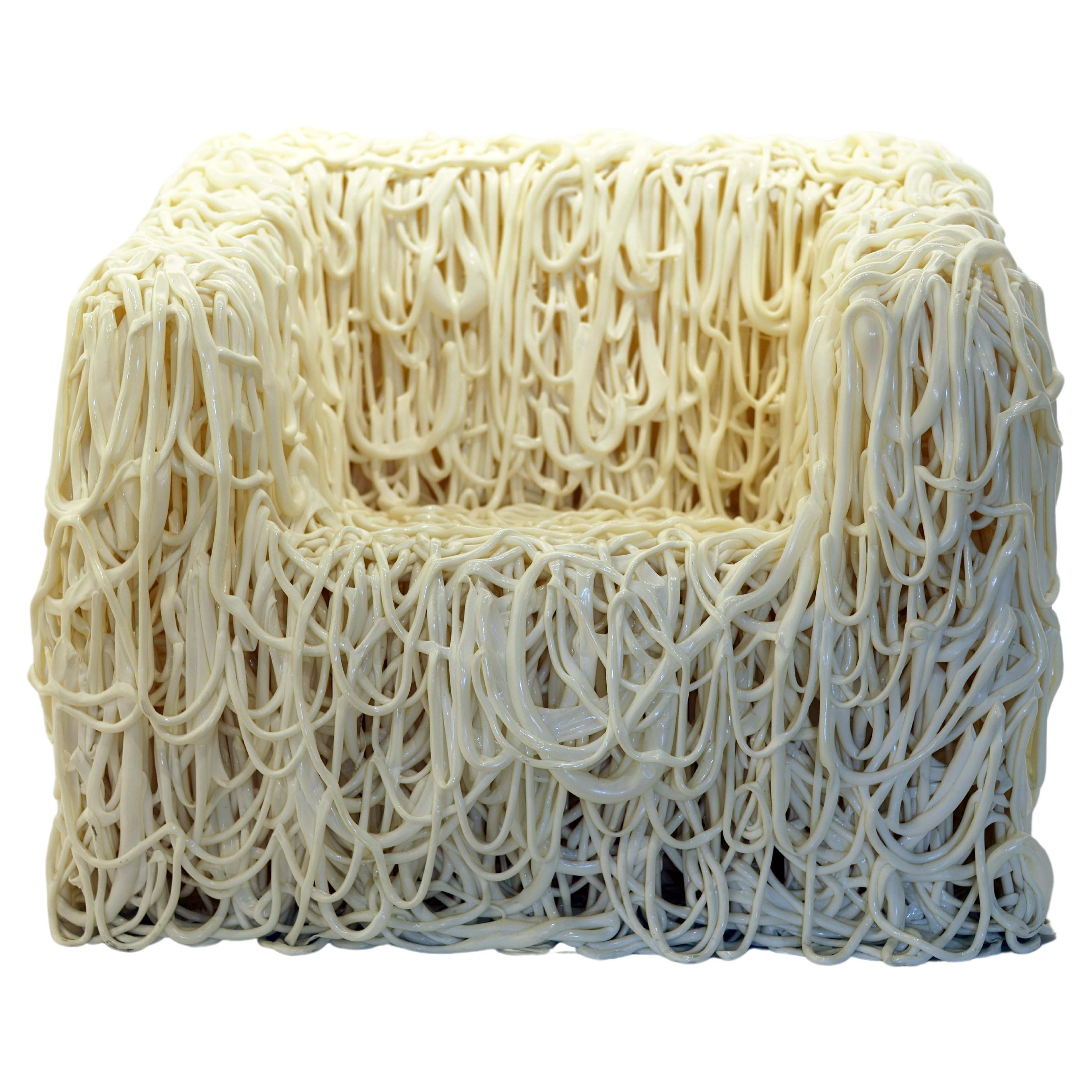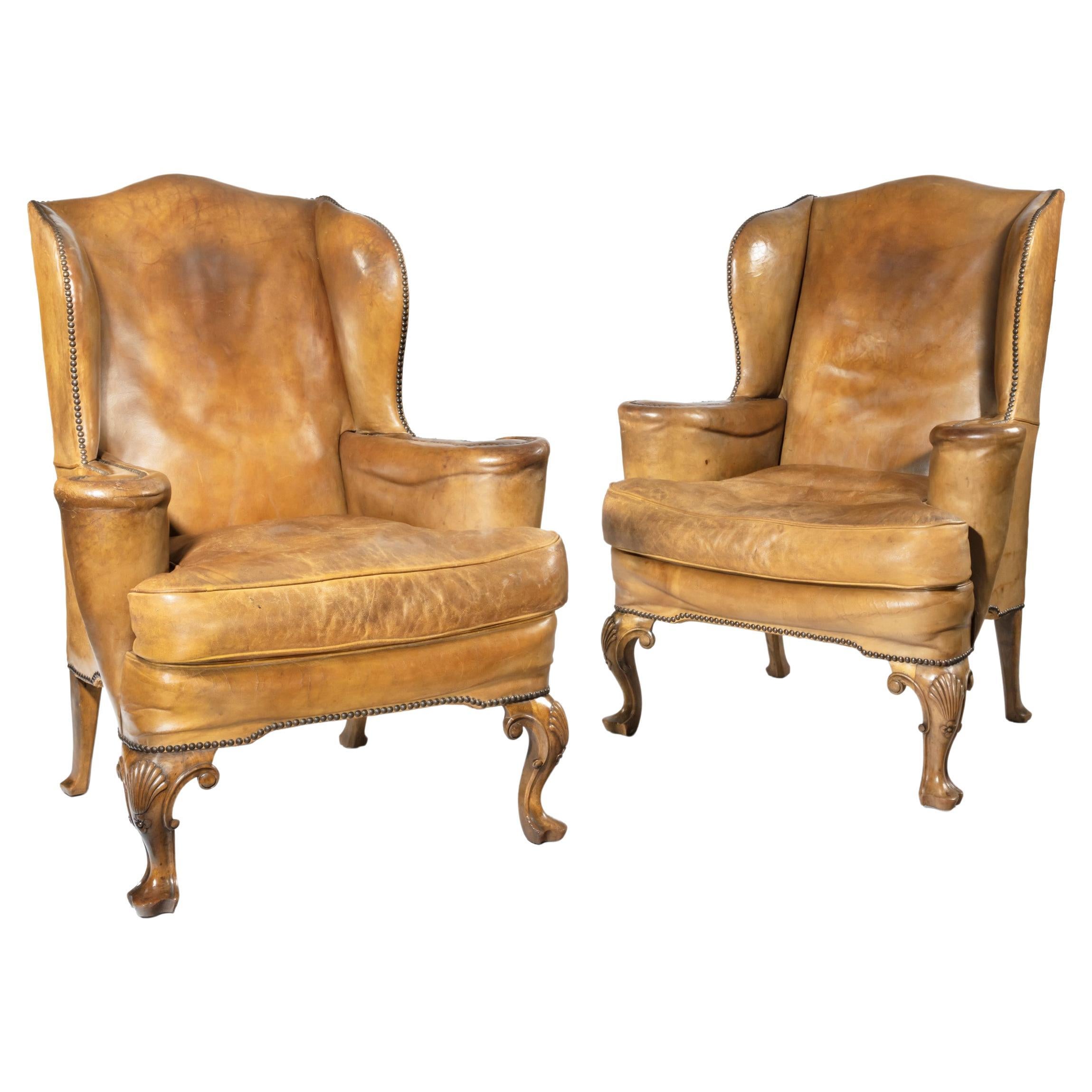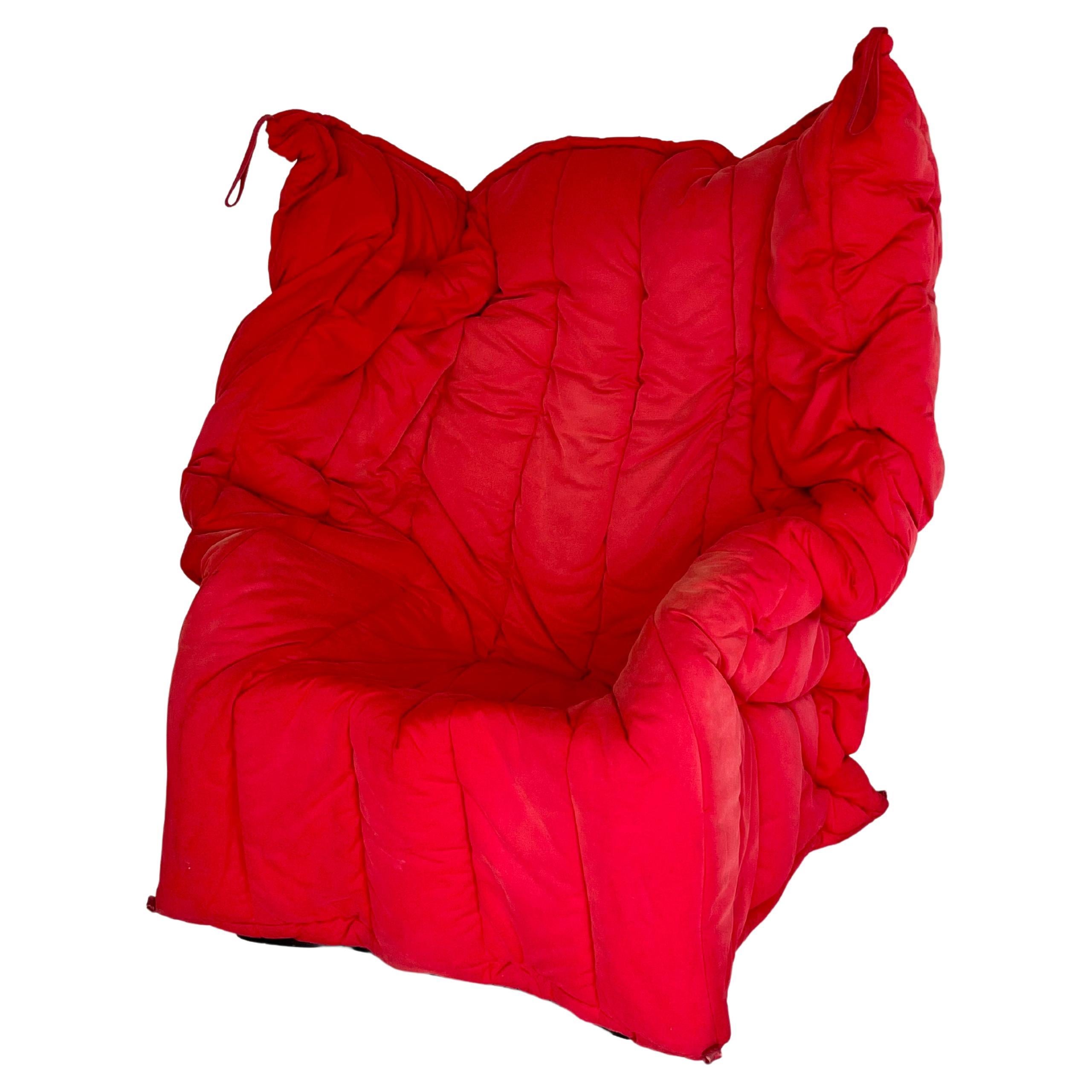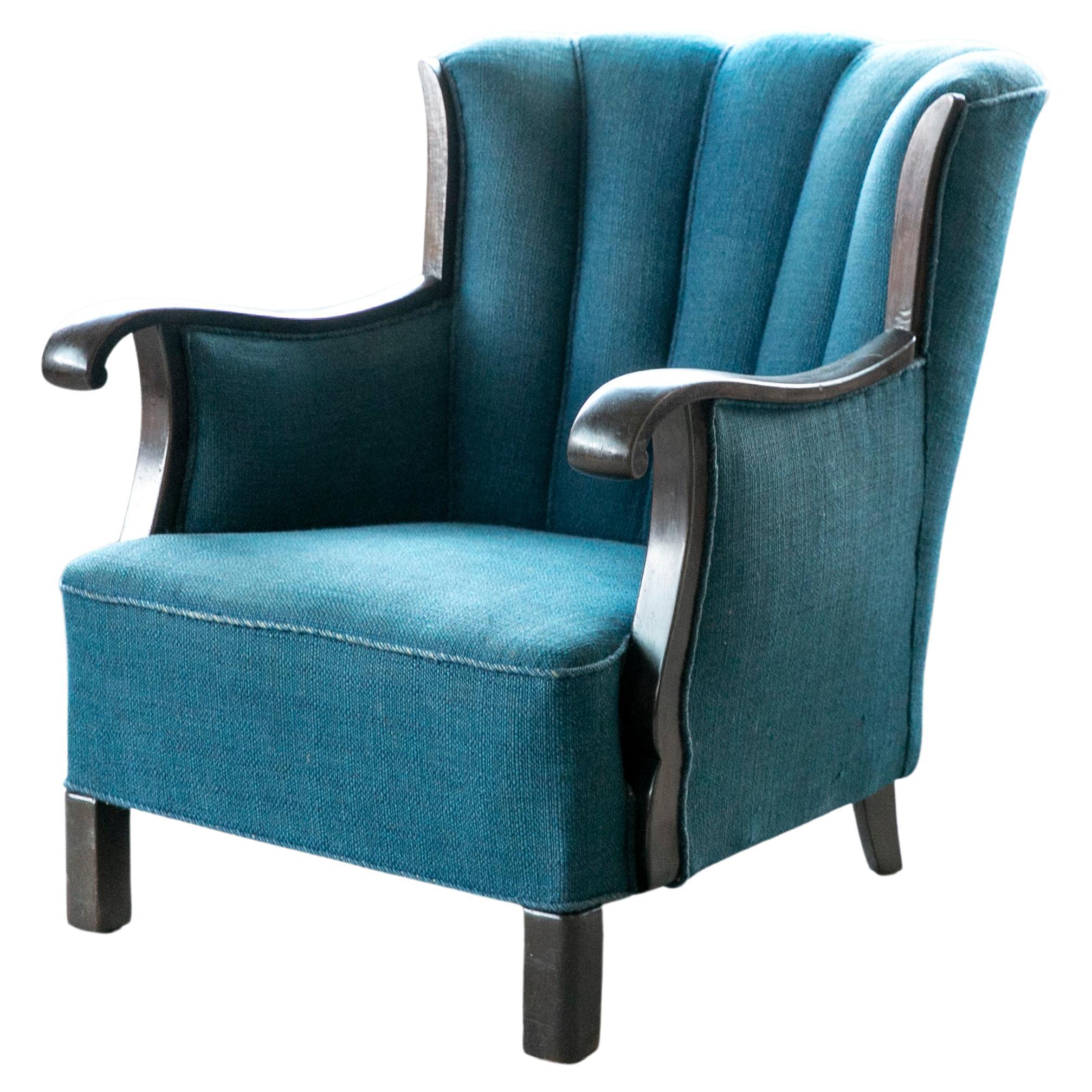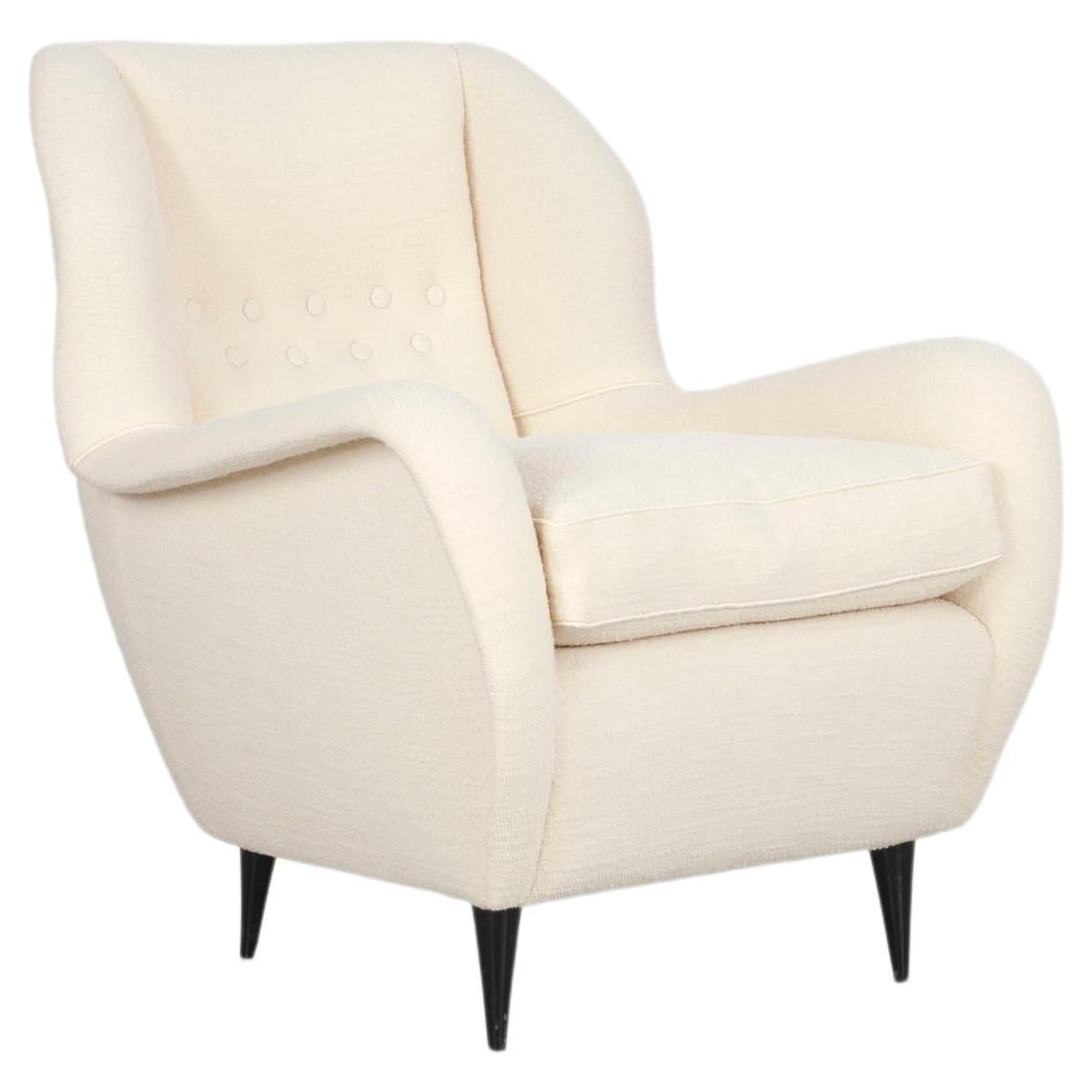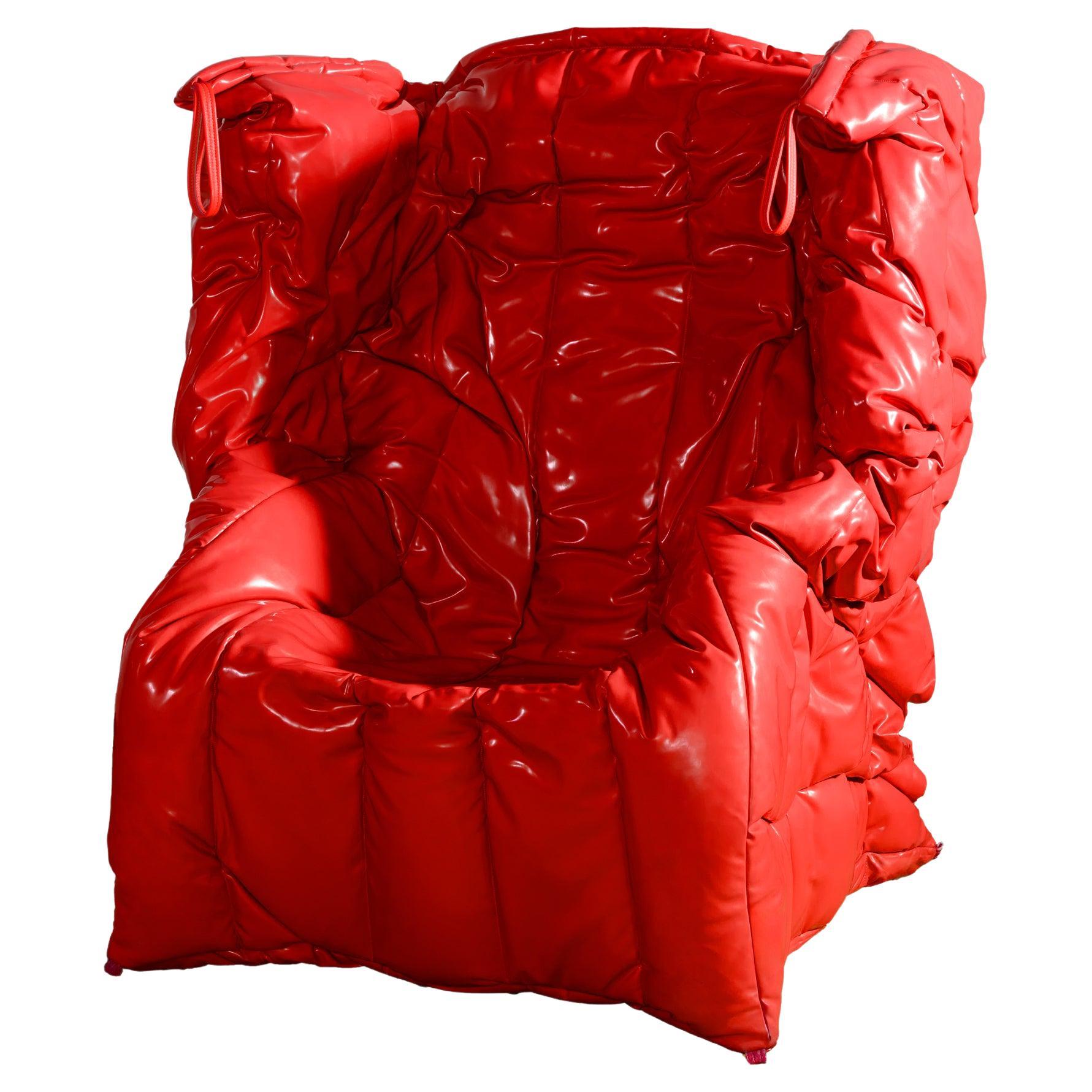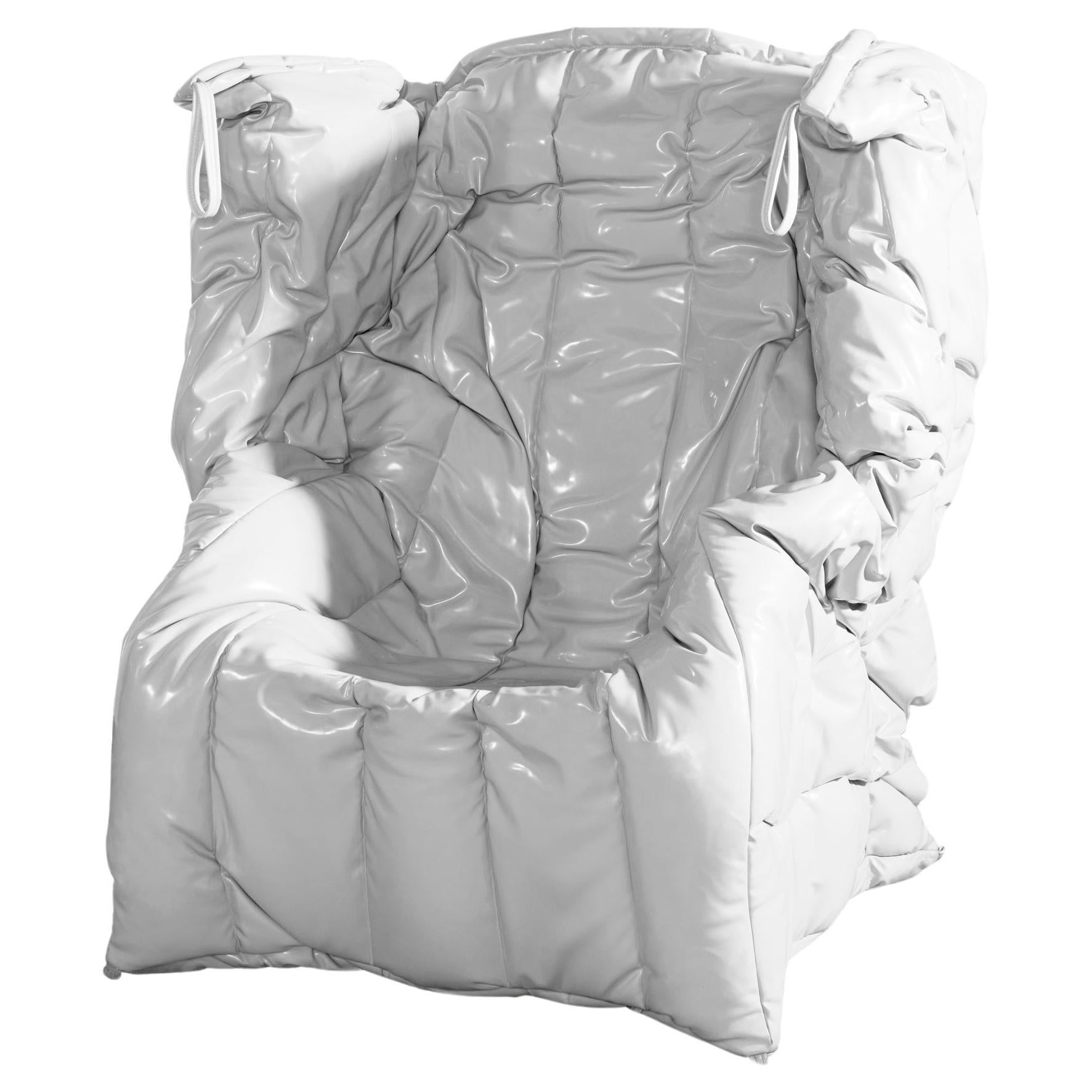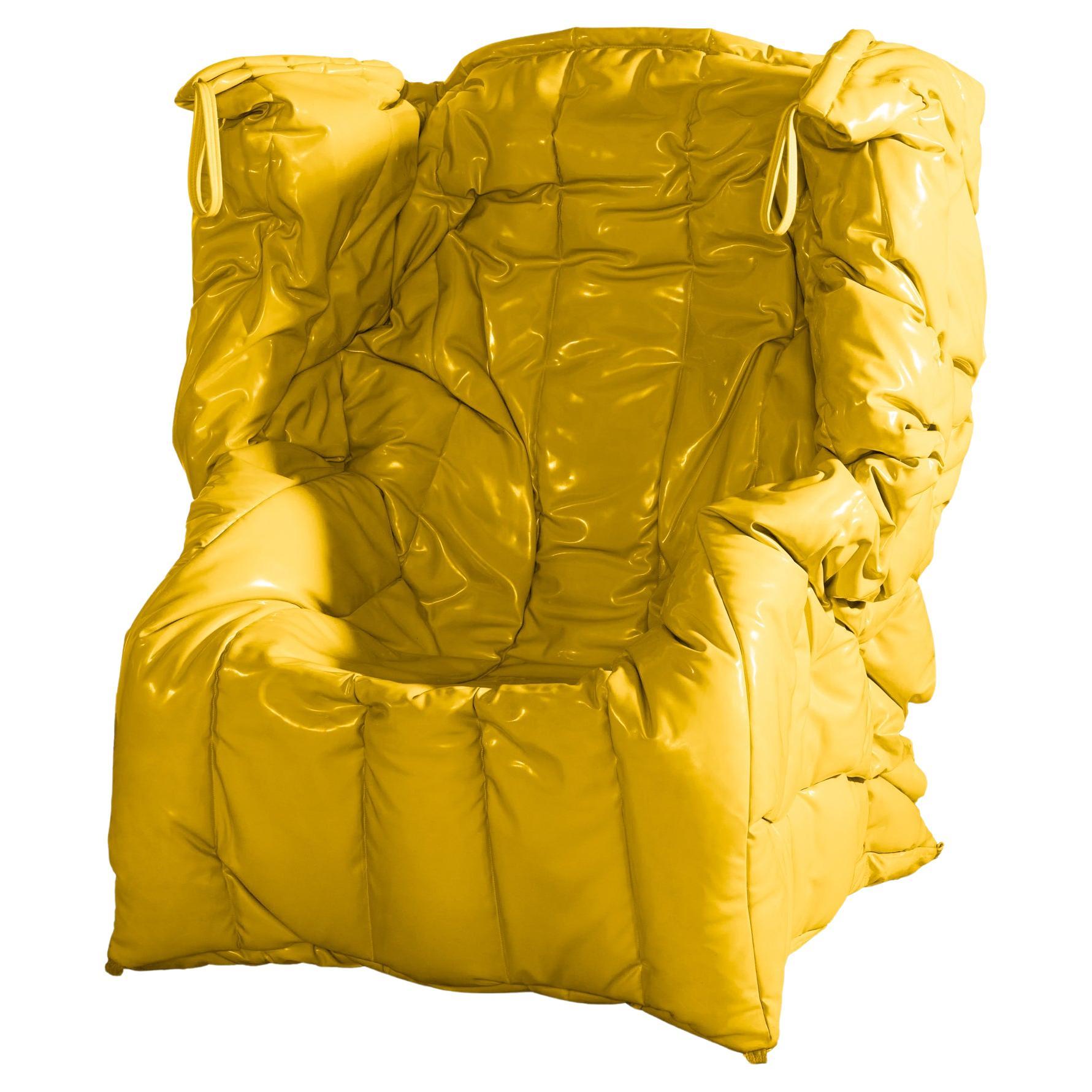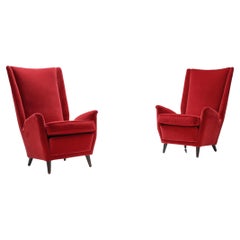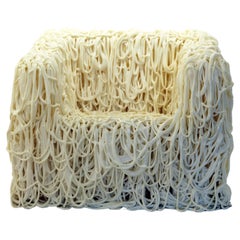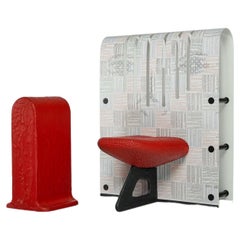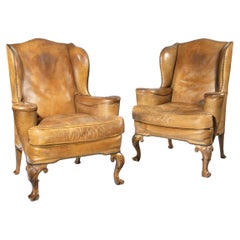
Functional Art Chair in the Style of Gaetano Pesce
View Similar Items
Want more images or videos?
Request additional images or videos from the seller
1 of 11
Functional Art Chair in the Style of Gaetano Pesce
About the Item
- Similar to:Gaetano Pesce (Designer)
- Dimensions:Height: 49.22 in (125 cm)Width: 43.31 in (110 cm)Depth: 27.56 in (70 cm)Seat Height: 17.72 in (45 cm)
- Style:Post-Modern (Of the Period)
- Materials and Techniques:
- Place of Origin:
- Period:
- Date of Manufacture:1980s
- Condition:Wear consistent with age and use.
- Seller Location:Antwerp, BE
- Reference Number:1stDibs: LU933416582161
About the Seller
4.8
Gold Seller
These expertly vetted sellers are highly rated and consistently exceed customer expectations.
Established in 2008
1stDibs seller since 2012
985 sales on 1stDibs
Typical response time: 10 hours
More From This SellerView All
- Postmodern Rare Standing Mirror Piece, in the Style of Gaetano Pesce, 1970'sBy Gaetano PesceLocated in Antwerp, BEGaetano Pesce; Italian design; Post-modern; 1970's; Radical Design; Postmodern rare standing mirror attributed to Gaetano Pesce. Made for the famous...Category
Vintage 1970s Italian Post-Modern Floor Mirrors and Full-Length Mirrors
MaterialsMirror, Resin
- Functional Art Chair / Throne "Left at the End of the Corridor" by Lionel JadotBy Lionel JadotLocated in Antwerp, BE'Left At The End of the Corridor' conversation piece by Lionel Jadot for Everyday Gallery, 2020 Collectible Design / Functional art, Lionel Jadot for Everyday Gallery, Belgium 2020 Born in Brussels in 1969, Lionel Jadot is an interior designer, artist, designer, filmmaker, adventurer. But all at once, preferably. Lionel Jadot is firing on all cylinders. ‘I never throw anything, I pick up everything. Not having a green thumb, I’m trying cuttings, weddings against nature. I never forget a line.’ He’s inviting us in subtle, off-beat worlds, on the edge of reality. Its material is made of dilated time. A wandering spirit, he seeks a protective balance in a hostile world. It is his constant questioning: what happens to the place where we live? For Lionel Jadot, everything is object, everything is history. He draws from other places, other times, and seeks what’s linking them. He sews, stitches, unpicks, blends materials, combines eras. He will enshrine some wood essence in metal, some mineral in a plant, the old in the new. ‘I take extra care to the joint between two materials.’ With him, there is always some play in the parts, as in a piece of machinery. From a kingdom to another, he provokes organic, viral growths, generating energy. Linking past and future, he never forgets a line. ‘I accumulate them.’ He’s inviting us in subtle worlds, off-beat, on the edge of reality. Are we in 1930 or in 2030? Both, no doubt. Its material is made of dilated time. The eye goes hand in hand with the ear. ‘When I walk into a place, I listen to the good (or bad) it does to me. An ineffable feeling.’ He recreates mutant buildings, like the future Royal Botanique, a 5 stars hotel housed in the Church of the Gesu, a former convent behind a 1940 façade. He talks about a ‘hotel object’, which he holds and turns around in his hand. A wandering spirit, he’s flirting with retro-futurism. The Jam, another hotel, is intended for urban travelers, fans of swiftness, fluidity and hospitality. He designs interiors as a set of objects: a motorcycle cut in concrete becomes a bar counter. He finds gothic cartoon echoes, from the likes of Moebius, Alejandro Jodorowsky, Enki Bilal, sets from Garage Hermétique and Blade Runner, a protective balance in a hostile world. Discovering Jadot’s little cosmos of collected and accumulated goods, it becomes clear that every element has its own story. I tried to collect them and in turn, devour them in the coming paragraphs. But first: the show is best experienced seated, barring the distinction between object of use and object of attention, they invite for different types of conversation. The seats, chairs, thrones all make us think of our own physical comportment, and of how the seat lends grandeur to the person sitting on it, by crowning its presence. The crackling floor, the felt walls and the diffuse light slow you down into an oddly absorbing environment, in which you are left puzzled. In the eclectic collages of objects, bits and pieces collected all over the world come together in ways practical, and logical, though possibly only in the artist’s mind. All his finds eventually seem to fall into place. Starting with the mere conception of a chair, rather than with a set-out plan or sketch, the works are intuitively construed out of an archive that one can only imagine the dimensions of. Things forgotten by others, precious for him, were all once designed for their own purpose. Here they find their fit as a base, a closing system or a balancing element. The first piece that opens the exhibition, the most throne-like of all seats in the show, builds around a chair of his grandmother, protected by mops, and harassed with bed springs. As you enter the space, you pass by a shell leaning over a yellow seat that stems from his old Mustang, and find a white stool piece with Mexican leather dog training whips— the white building blocks of which turn out to be dried molding material, as found and broken out of a bucket by workers every morning. Further, the stone piece that reminds one of the stone age, is indeed made of 400 million old rocks, and the soft seats are lent from construction, where these strokes of textile carry up the heaviest goods. In the corner — but as you walk this walk please be seated on any of the thrones and experience the work for a moment— the green fluffy cover is made by XXXX who remakes cartographies of warzones, one of which is here mounted on a flexible fishing chair. On an experience level, the conversation chair enhances self-confidence, while putting you literally in a good spot with the person you’re conversing with. The lamp perfectly shows the playful Cadavre Exquis...Category
2010s Belgian Post-Modern Armchairs
MaterialsSteel
- Italian Wingback Armchair in Red Velvet by Gio Ponti, 1950sBy Gio PontiLocated in Antwerp, BEItalian wingback armchair in red upholstery by Gio Ponti. Gio Ponti high-back lounge chair with a slightly titled backrest that supports the seating posture, making them very comfort...Category
Vintage 1950s Italian Mid-Century Modern Armchairs
MaterialsBrass
- Coffee Table by Gaetano Pesce, Italy, 1990sBy Gaetano PesceLocated in Antwerp, BEMemphis Style; Gaetano Pesce; Modern; Postmodern; Italy; Modernism; Free Form; Organic Design; 1990s; Organic coffee table by Gaetano Pesce...Category
1990s Italian Post-Modern Coffee and Cocktail Tables
MaterialsSteel
- Functional Art Chair / Throne "'Spring Swab" by Lionel JadotBy Lionel JadotLocated in Antwerp, BECollectible design / Functional art, Lionel Jadot for Everyday Gallery, Belgium 2020 Born in Brussels in 1969, Lionel Jadot is an interior designer, artist, designer, filmmaker, adventurer. But all at once, preferably. Lionel Jadot is firing on all cylinders. ‘I never throw anything, I pick up everything. Not having a green thumb, I’m trying cuttings, weddings against nature. I never forget a line.’ He’s inviting us in subtle, off-beat worlds, on the edge of reality. Its material is made of dilated time. A wandering spirit, he seeks a protective balance in a hostile world. It is his constant questioning: what happens to the place where we live? For Lionel Jadot, everything is object, everything is history. He draws from other places, other times, and seeks what’s linking them. He sews, stitches, unpicks, blends materials, combines eras. He will enshrine some wood essence in metal, some mineral in a plant, the old in the new. ‘I take extra care to the joint between two materials.’ With him, there is always some play in the parts, as in a piece of machinery. From a kingdom to another, he provokes organic, viral growths, generating energy. Linking past and future, he never forgets a line. ‘I accumulate them.’ He’s inviting us in subtle worlds, off-beat, on the edge of reality. Are we in 1930 or in 2030? Both, no doubt. Its material is made of dilated time. The eye goes hand in hand with the ear. ‘When I walk into a place, I listen to the good (or bad) it does to me. An ineffable feeling.’ He recreates mutant buildings, like the future Royal Botanique, a 5 stars hotel housed in the Church of the Gesu, a former convent behind a 1940 façade. He talks about a ‘hotel object’, which he holds and turns around in his hand. A wandering spirit, he’s flirting with retro-futurism. The Jam, another hotel, is intended for urban travelers, fans of swiftness, fluidity and hospitality. He designs interiors as a set of objects: a motorcycle cut in concrete becomes a bar counter. He finds gothic cartoon echoes, from the likes of Moebius, Alejandro Jodorowsky, Enki Bilal, sets from Garage Hermétique and Blade Runner, a protective balance in a hostile world. Discovering Jadot’s little cosmos of collected and accumulated goods, it becomes clear that every element has its own story. I tried to collect them and in turn, devour them in the coming paragraphs. But first: the show is best experienced seated, barring the distinction between object of use and object of attention, they invite for different types of conversation. The seats, chairs, thrones all make us think of our own physical comportment, and of how the seat lends grandeur to the person sitting on it, by crowning its presence. The crackling floor, the felt walls and the diffuse light slow you down into an oddly absorbing environment, in which you are left puzzled. In the eclectic collages of objects, bits and pieces collected all over the world come together in ways practical, and logical, though possibly only in the artist’s mind. All his finds eventually seem to fall into place. Starting with the mere conception of a chair, rather than with a set-out plan or sketch, the works are intuitively construed out of an archive that one can only imagine the dimensions of. Things forgotten by others, precious for him, were all once designed for their own purpose. Here they find their fit as a base, a closing system or a balancing element. The first piece that opens the exhibition, the most throne-like of all seats in the show, builds around a chair of his grandmother, protected by mops, and harassed with bed springs. As you enter the space, you pass by a shell leaning over a yellow seat that stems from his old Mustang, and find a white stool piece with Mexican leather dog training whips— the white building blocks of which turn out to be dried molding material, as found and broken out of a bucket by workers every morning. Further, the stone piece that reminds one of the stone age, is indeed made of 400 million old rocks, and the soft seats are lent from construction, where these strokes of textile carry up the heaviest goods. In the corner — but as you walk this walk please be seated on any of the thrones and experience the work for a moment— the green fluffy cover is made by XXXX who remakes cartographies of warzones, one of which is here mounted on a flexible fishing chair. On an experience level, the conversation chair enhances self-confidence, while putting you literally in a good spot with the person you’re conversing with. The lamp perfectly shows the playful Cadavre Exquis...Category
2010s Belgian International Style Armchairs
MaterialsMetal
- 'Cannaregio' Modular Sofa by Gaetano Pesce for Cassina, Italy, 1980sBy Cassina, Gaetano PesceLocated in Antwerp, BE'Cannaregio' sofa, a vibrant and versatile creation by Italian designer Gaetano Pesce for Cassina. Originally conceived in 1987, this sofa exudes playfulness, adaptability, and a bur...Category
Vintage 1980s Italian Post-Modern Sofas
MaterialsFabric
You May Also Like
- Gaetano Pesce Senza Fine Chair - WhiteBy Gaetano PesceLocated in Naples, FLRare Gaetano Pesce design produced by Meritalia, Italy 2009. Incredible condition Dimensions approximate A cord of extruded polyurethane molded into the shape of a chair. Each chai...Category
Early 2000s Italian Post-Modern Armchairs
MaterialsResin
- Gaetano Pesce La Smorfia Chair Meritalia, 2003By Gaetano PesceLocated in Roosendaal, Noord BrabantPostmodern chair designed by Gaetano Pesce and manufactured by Meritalia, Italy 2003. This unique shaped chair is more of a sculpture and fits perfectly in the oeuvre from Pesce, wit...Category
Early 2000s Italian Post-Modern Armchairs
MaterialsMetal
- Pair of Walnut Wing Armchairs in the Queen Anne StyleLocated in Lymington, HampshireA pair of walnut wing armchairs in the Queen Anne style, the front legs carved with shells on the knees. English, circa 1920.Category
Vintage 1920s English Queen Anne Armchairs
MaterialsLeather, Walnut
- Shadow Armchair, Gaetano Pesce for MeritaliaBy Gaetano PesceLocated in Las Vegas, NVExceptionally rare Gaetano Pesce Shadow chair for Meritalia. Due to the manufacturing process created by Pesce every Shadow chair is unique in its...Category
21st Century and Contemporary Italian Post-Modern Armchairs
MaterialsFabric, Resin
- Shadow Armchair by Gaetano Pesce, MeritaliaBy Gaetano PesceLocated in Las Vegas, NVExtremely rare and difficult to find Shadow armchair by Gaetano Pesce for Meritalia, 2007. Formed from pouring polyurethane resin into the bag-like uph...Category
Early 2000s Italian Post-Modern Armchairs
MaterialsFabric, Resin
$10,400 Sale Price20% Off - Shadow Armchair, Gaetano Pesce for MeritaliaBy Gaetano PesceLocated in Las Vegas, NVExceptionally rare Gaetano Pesce Shadow chair for Meritalia. Formed by pouring polyurethane resin into the specially designed fabric “bag” the res...Category
21st Century and Contemporary Italian Post-Modern Armchairs
MaterialsFabric, Resin
$10,000 Sale Price20% Off
